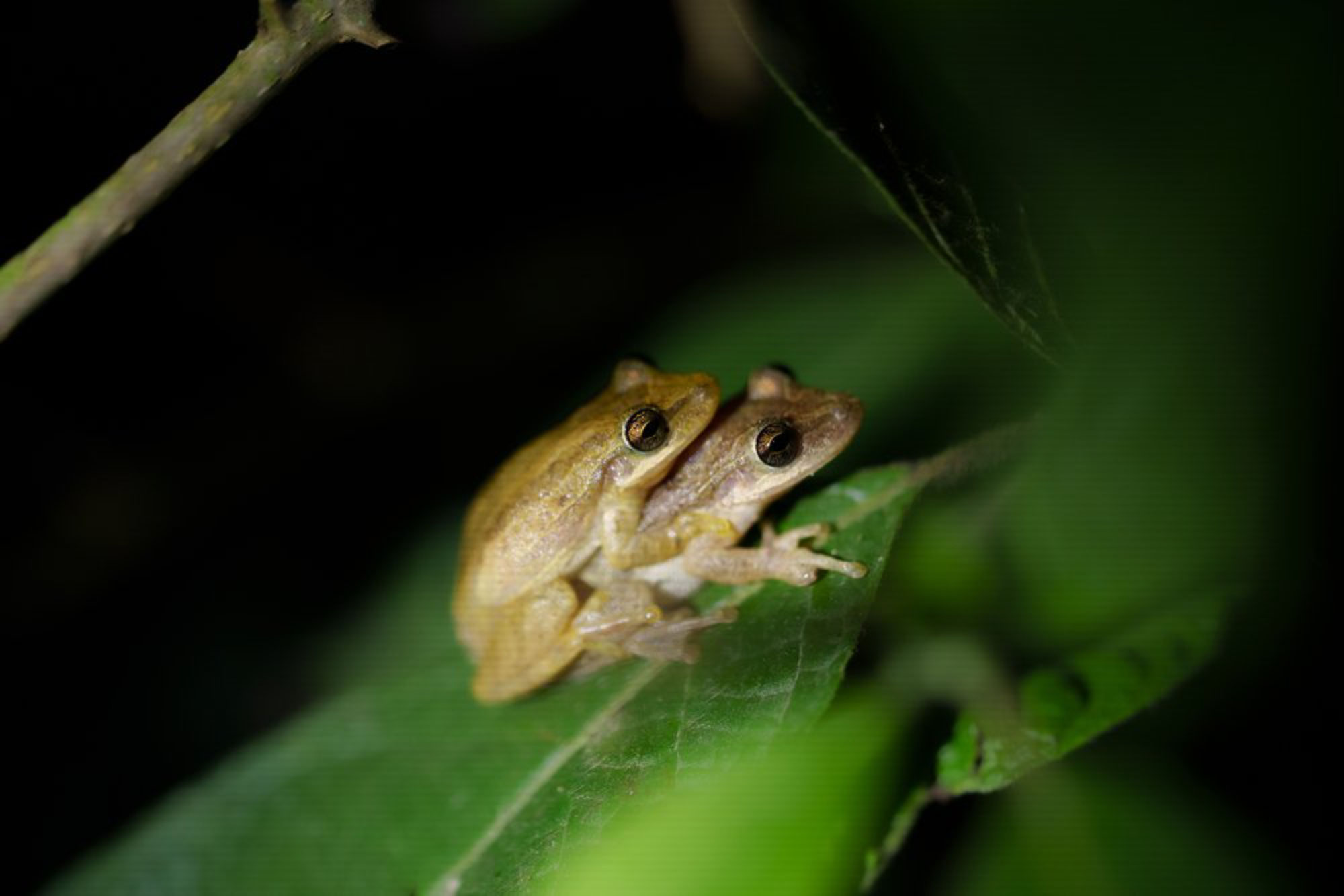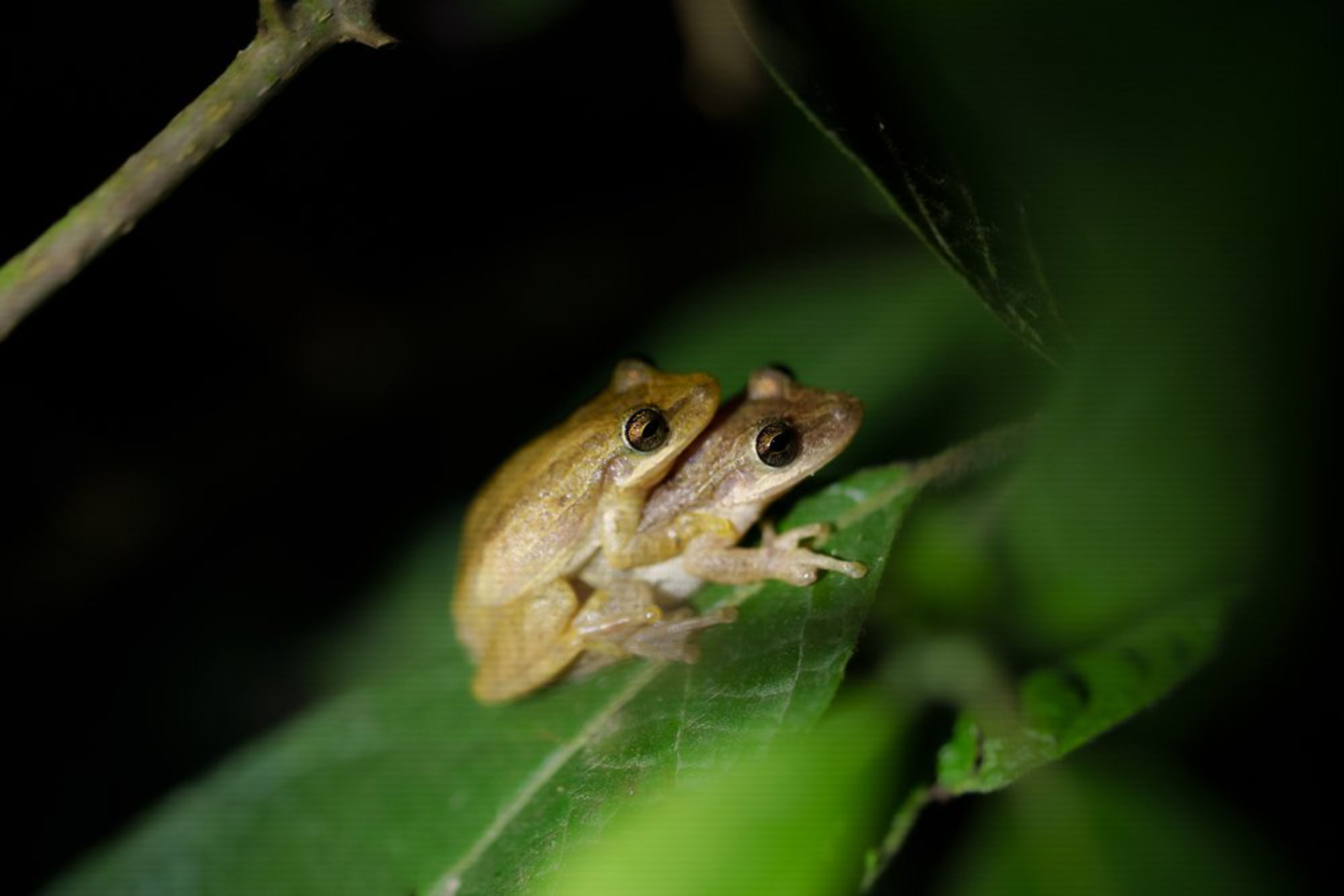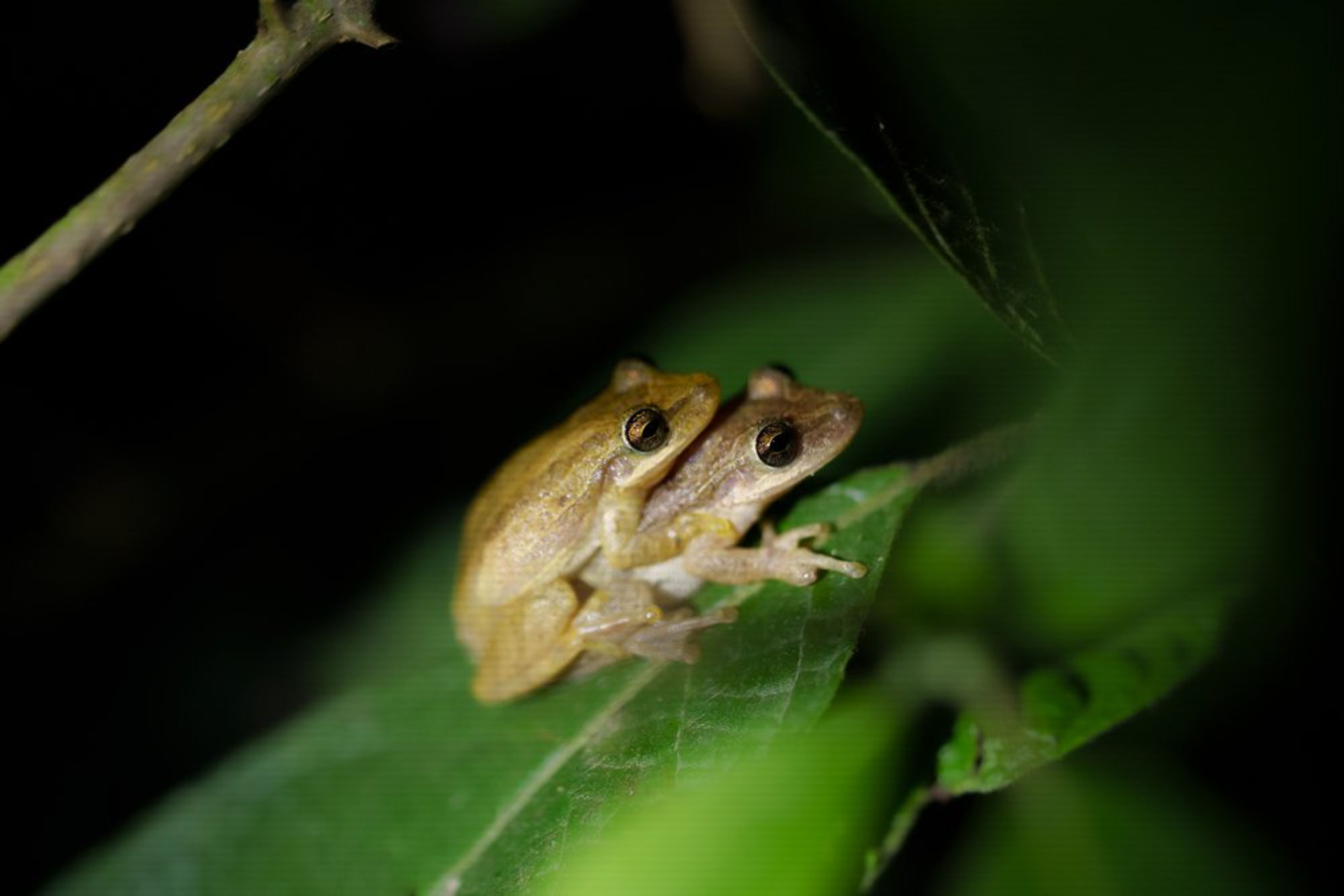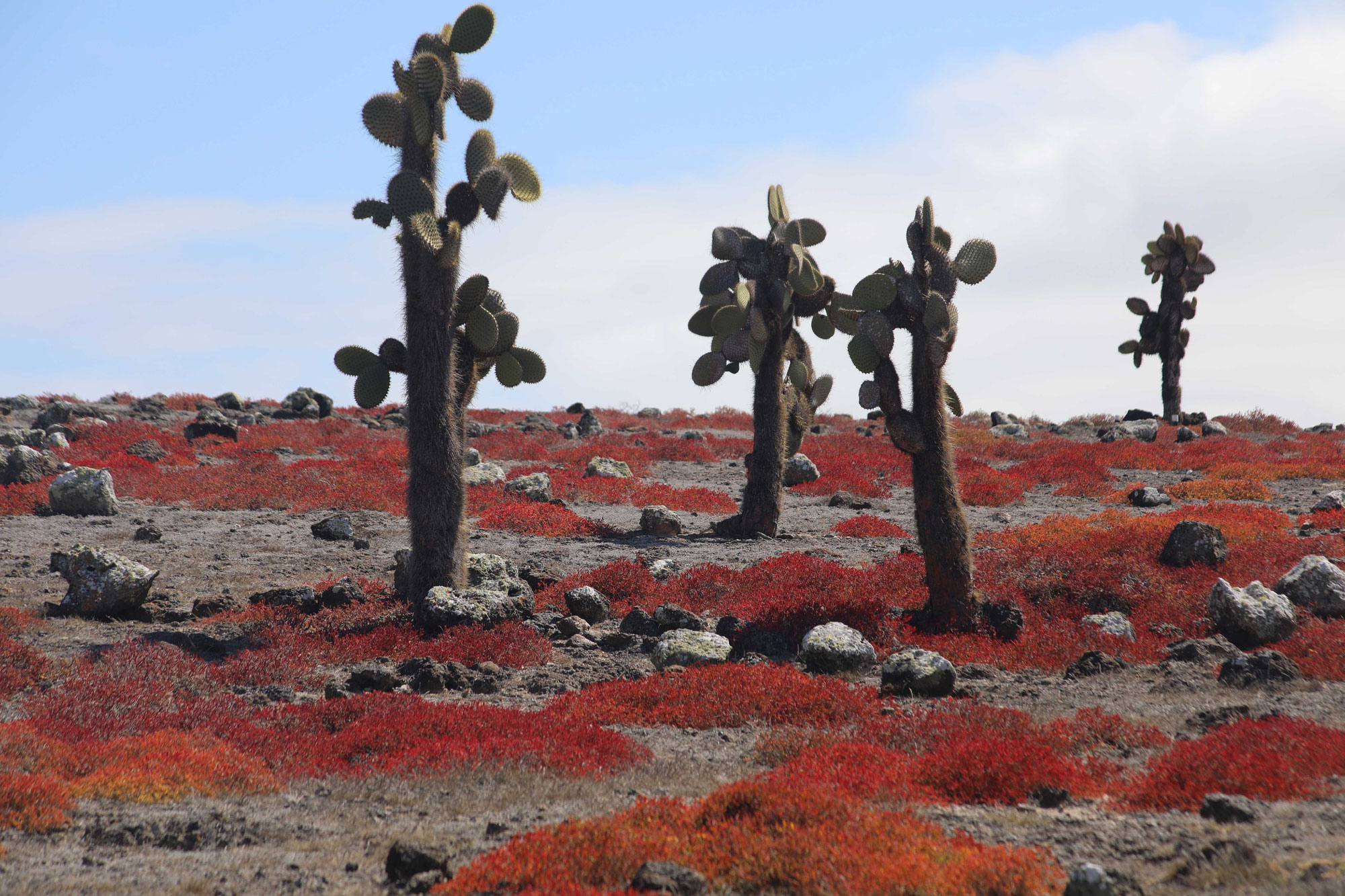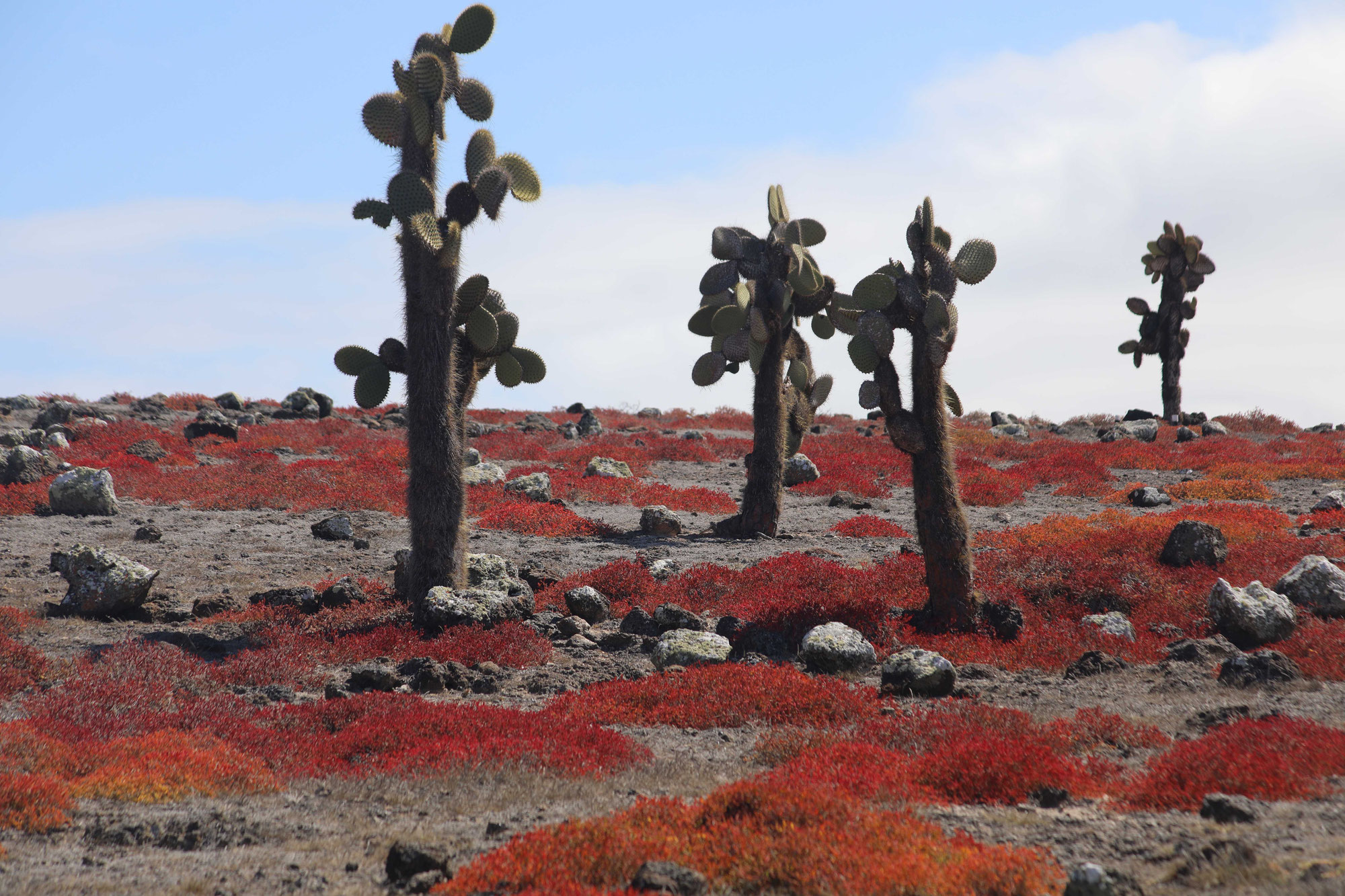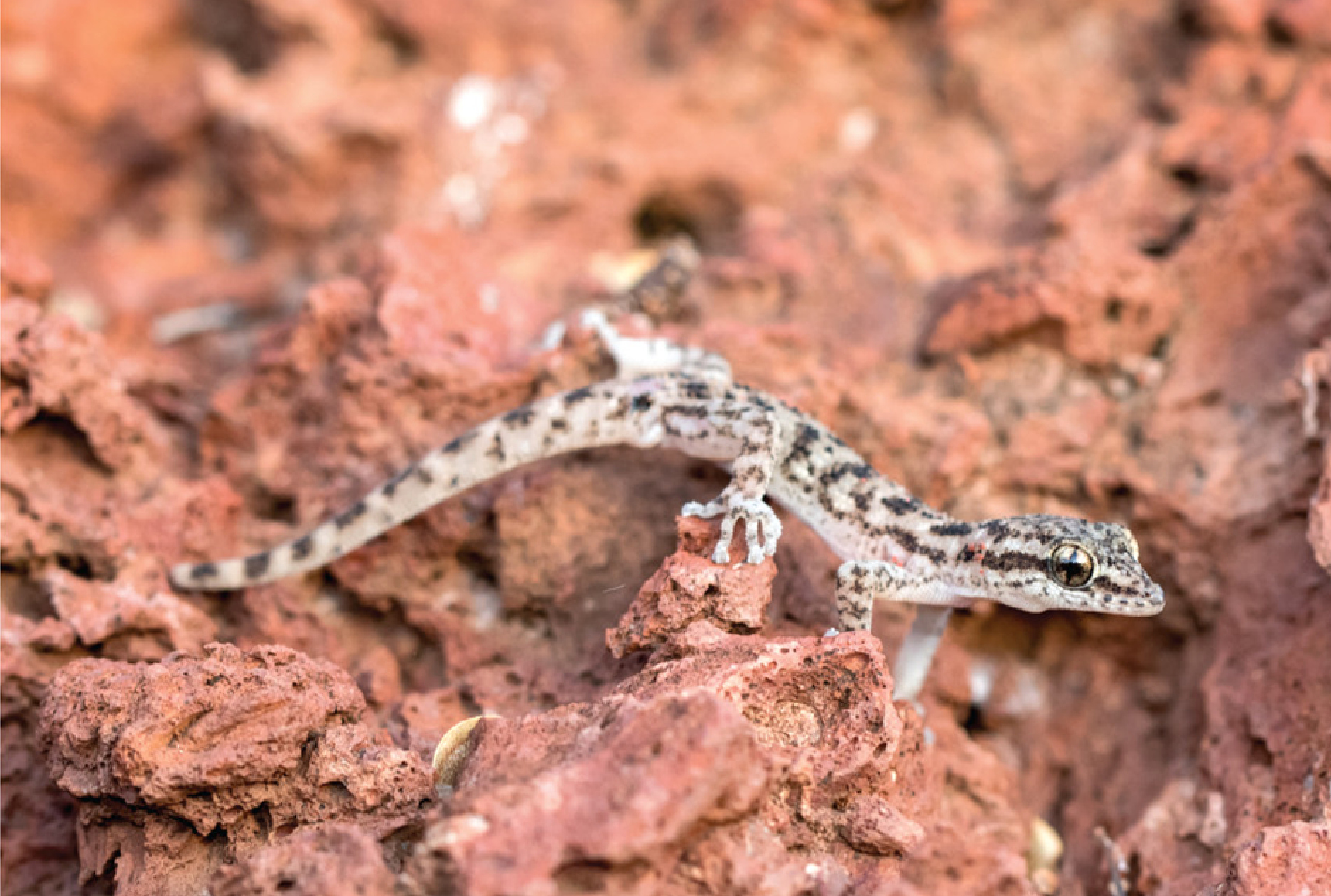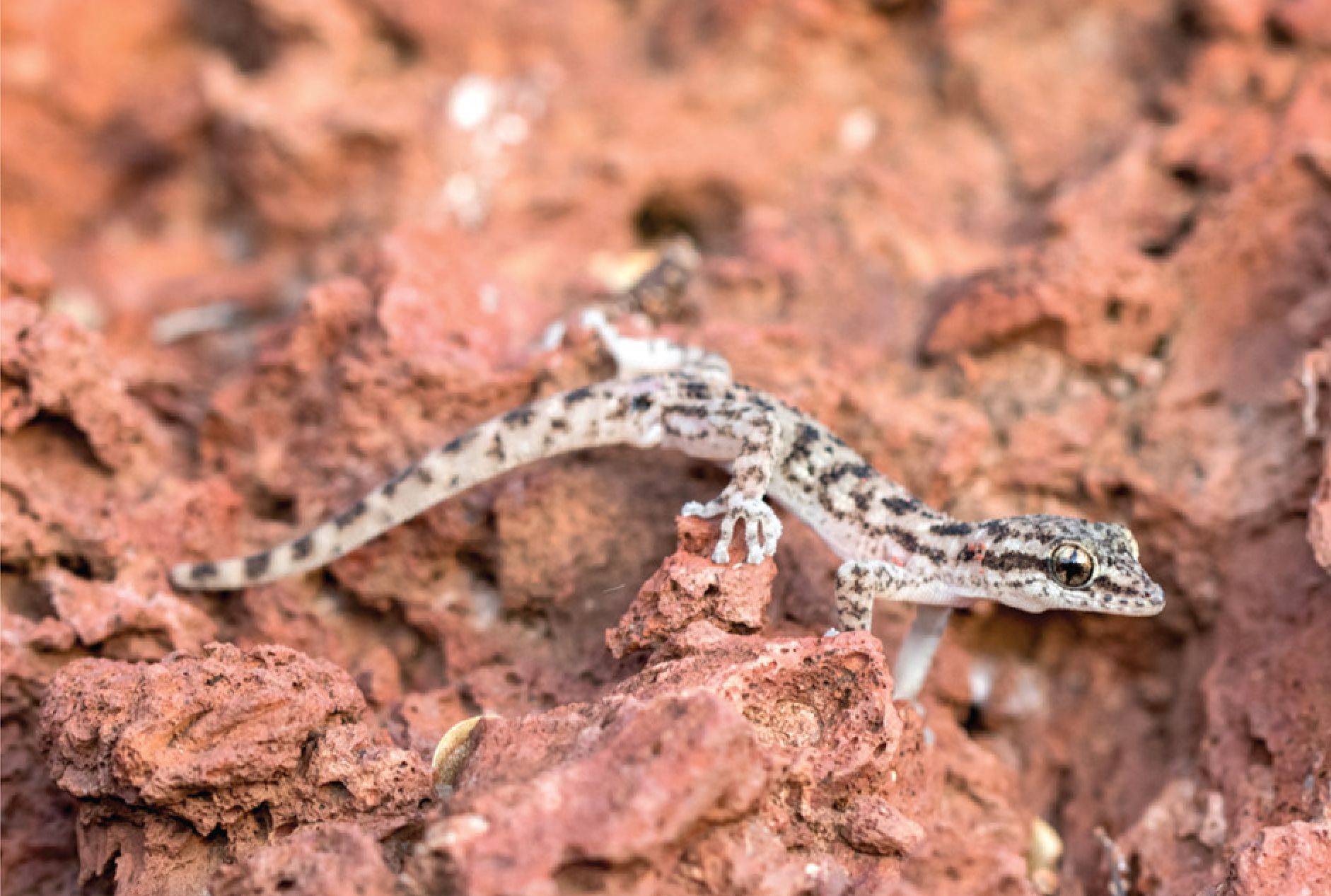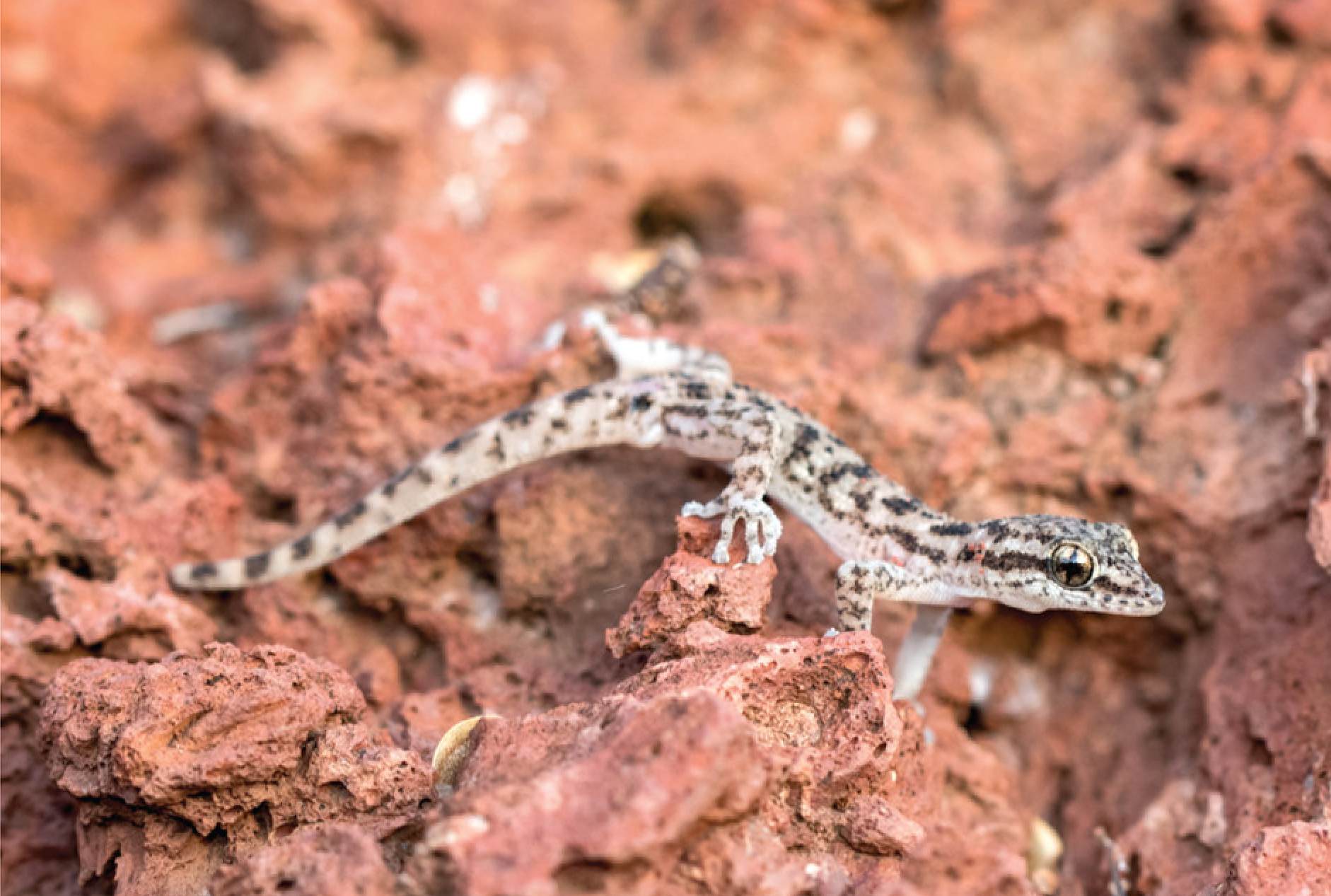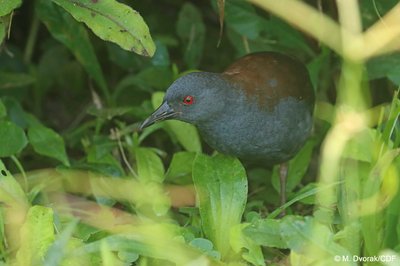Latest News · 02.07.2025
Due to their isolation from the mainland, amphibians were unable to reach the Galápagos Islands for thousands of years. However, a small but extremely adaptable species of frog has now spread across the islands – with far-reaching consequences for the native wildlife. The tree frog Scinax quinquefasciatus, originally from Ecuador, was probably introduced as a stowaway in the late 1990s and has since spread widely on Isabela and Santa Cruz.
Actualités · 02.07.2025
En raison de leur éloignement du continent, les amphibiens n'ont pas pu atteindre les Galápagos pendant des millénaires. Mais entre-temps, une espèce de grenouille petite mais extrêmement adaptable s'est répandue, avec des conséquences importantes pour la nature locale. Originaire d'Équateur, la rainette Scinax quinquefasciatus a probablement été introduite à la fin des années 1990 comme passager clandestin et s'est depuis largement répandue sur Isabela et Santa Cruz.
Neuigkeiten · 02.07.2025
Durch die Abgeschiedenheit vom Festland war es über Jahrtausende für Amphibien nicht möglich nach Galápagos zu gelangen. Doch inzwischen hat sich eine kleine, aber äusserst anpassungsfähige Froschart breitgemacht – mit weitreichenden Folgen für die heimische Natur. Der ursprünglich aus Ecuador stammende Laubfrosch Scinax quinquefasciatus wurde vermutlich Ende der 1990er Jahre als blinder Passagier eingeschleppt und hat sich seither auf Isabela und Santa Cruz stark verbreitet.
Actualités · 03.06.2025
Lorsque l'on pense aux îles Galápagos, la première chose qui vient à l'esprit n'est probablement pas Plaza Sur. Cette île de seulement 13 hectares est située à l'est de Santa Cruz et n'est pas habitée par l'homme. C'est pourtant sur ce site, fréquenté uniquement par des touristes et des chercheurs, qu'une découverte révolutionnaire a été faite au début de l'année.
Latest News · 03.06.2025
When you think of the Galápagos Islands, Plaza Sur is probably not the first place that comes to mind. The island, which is only 13 hectares in size, lies to the east of Santa Cruz and is not inhabited by humans. However, a groundbreaking discovery was made at this location, which is only visited by tourists and researchers, at the beginning of the year.
Neuigkeiten · 03.06.2025
Wer an die Galápagos-Inseln denkt, dem dürfte als erstes nicht unbedingt Plaza Sur in den Sinn kommen. Die nur 13 Hektar grosse Insel liegt östlich von Santa Cruz und ist nicht von Menschen bewohnt. An diesem nur von Touristen und Forschern besuchten Ort wurde Anfang Jahr jedoch eine bahnbrechende Entdeckung gemacht.
Neuigkeiten · 01.05.2025
Auf der kleinen Galápagos-Insel Rábida wurde ein Tier entdeckt, das viele schon für ausgestorben hielten: der Blattfingergecko (Phyllodactylus). Diese nachtaktive Echse galt seit Langem als verschwunden – bislang waren nur fossile Knochen bekannt. Nun aber konnten Forschende lebende Tiere nachweisen und sogar DNA-Proben nehmen. Die überraschende Wiederentdeckung ist ein Erfolg für den Artenschutz und zeigt, wie wichtig Schutzmassnahmen sein können.
Actualités · 01.05.2025
Sur la petite île de Rábida, dans l’archipel des Galápagos, des scientifiques ont redécouvert un animal que l’on pensait disparu : le gecko à doigts feuillus (Phyllodactylus). Ce petit lézard nocturne n’était connu que par des os fossiles. Désormais, des spécimens vivants ont été observés, et même des échantillons d’ADN ont été prélevés. Une découverte inattendue qui marque une belle réussite pour la protection de la nature.
Latest News · 01.05.2025
On the small Galápagos island of Rábida, scientists have rediscovered an animal thought to be extinct: the leaf-toed gecko (Phyllodactylus). This nocturnal lizard had long been considered gone—only fossil bones had ever been found. Now, living specimens have been observed, and even DNA samples collected. This surprising find is a success for conservation and highlights the value of protective measures.
Latest News · 11.04.2025
The island of Floreana is one of the islands in the archipelago that has been most heavily modified by humans. It was therefore assumed that the Galápagos rail (Laterallus spilonota) became extinct due to invasive species. These small land birds fly very poorly and are therefore highly threatened by introduced cats and rats.

